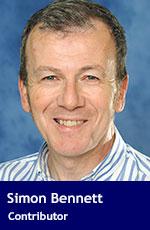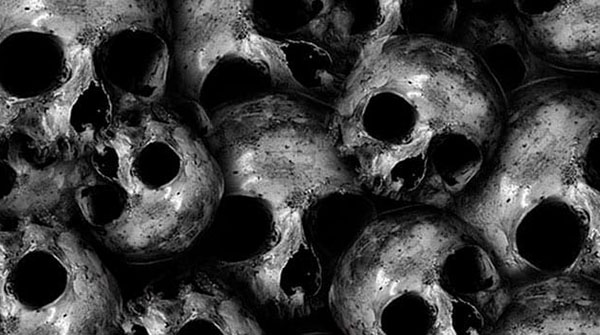Dictators like Putin would do well to remember the saying: After Hubris, Nemesis
 It is axiomatic that a dictatorship will, eventually, implode in a riot of recrimination, mayhem and murder.
It is axiomatic that a dictatorship will, eventually, implode in a riot of recrimination, mayhem and murder.
Consider 20th-century Russia. Having manoeuvred himself into the top job, Joseph Stalin set about rolling back his esteemed predecessor Lenin’s experiments with artistic freedom and small-scale private enterprise. Ever the calculating politician, during the 1930s Stalin purged Bolshevik cadres of anyone suspected of losing faith in the revolution or his leadership. To say that Stalin acted ruthlessly would be to understate the nature and scope of his Great Terror.
Noteworthy features of the Great Terror, which began in the late 1920s, included:
- the creation by Stalin of an inner cabinet of fundamentalist communists loyal to him alone
- the neutralization of prominent opponents such as ideologue and thinker Leon Trotsky, who was ejected from the Soviet Union, then assassinated
- the use by Stalin of the state security apparatus (initially the Cheka, then the NKVD, then the KGB) to eliminate alleged counter-revolutionaries. Millions were incarcerated in the gulags. Many were executed
- the creation by Stalin of a surveillance society – very much like today’s society where mobile telephone data, supermarket cashcard transactions, automatic number-plate recognition (ANPR) data and CCTV cameras can be used to track movements and profile citizens – in which loyal communists were encouraged to denounce anyone (including family members) suspected of losing faith in the revolution and its leadership
- the purging of military officers suspected of doubting the direction in which Stalin was taking the Soviet Union. This was the most dangerous of all of Stalin’s moves against so-called counter-revolutionaries, as it robbed the Red Army of many of its most experienced and capable officers. Eighty-one senior officers were executed, a gift to Adolf Hitler whose invading army benefitted from the resulting chaos. Faced with a rampant Wehrmacht, the Russians retreated, fighting the invader not with weapons but with space (which Russia had in abundance). Entire factories were dismantled and transported eastwards. It was all the Kremlin could do until the Red Army’s officer class had been resuscitated.
In 1956, Nikita Khrushchev denounced his predecessor’s excesses and rehabilitated the Red Army. Despite Khrushchev’s de-Stalinisation programme, however, the Russian state remained intolerant of dissent. Tellingly, in 2022, Russia’s Supreme Court, egged on by Vladimir Putin, ordered the closure of Memorial International, created to document Stalin’s Great Terror.
Another dictatorship rich in lessons is that of Pol Pot’s Cambodia. Pol Pot led the Khmer Rouge, a band of brutish communist zealots that, in the 1970s, emptied Cambodia’s towns and cities in the hope of creating a rural utopia of collectivized farms. Far from creating a rural utopia, the Khmer created a Stone Age hell-on-earth that saw some 21 percent of the population of Cambodia murdered or starved to death, a genocide documented in the 1984 Roland Joffé movie The Killing Fields.
As in Stalin’s Russia, children were encouraged to spy on their parents. As in Stalin’s Russia, the state security apparatus was used to eliminate free-thinkers. And, as in Stalin’s Russia, the ruling party, the Khmer, began to destroy itself in a fever of egomania, groupthink, paranoia, recrimination, banishment and political assassination.
As historian Nigel Cawthorne explains in his excellent book, Vietnam: A War Lost and Won: “From the beginning of 1977, the Khmer Rouge executioners turned in on themselves. Pol Pot ordered the systematic extermination of (Communist Party of Kampuchea) members who were thought to have a petty-bourgeois or intellectual background. They were accused of deviance. S-21 – a secret security apparatus – tortured fellow party members into confessing that they were CIA agents. Veteran peasant leaders were put to death …. Of the Khmer Republic elite and the original (Communist Party of Kampuchea) cadre, 75 percent or more were exterminated”.
Further evidence, surely, that, in time, a dictatorship will destroy itself.
Which brings us to today’s Russia where, like Stalin and Pol Pot, an increasingly desperate and paranoid leader is purging his inner circle of free-thinkers, removing army officers suspected of disloyalty and using the state security apparatus, specifically the FSB and GRU (the intelligence arm of Russia’s Ministry of Defence), to stem criticism of the ruling elite at home and abroad.
Since the failed Wagner PMC coup, the Kremlin has removed several senior army officers, including the outspoken Major General Ivan Popov, whose criticisms of the ruling cadre, published in the New York Post, are worth revisiting. Said Popov: “I had no right to lie in the … name of my fallen comrades in arms, so I outlined all the problems which exist. The Ukrainian army could not break through our ranks at the front but our senior chief (Minister of Defence Sergei Shoigu) hit us from the rear, viciously beheading the army at the most difficult and intense moment”.
Sackings create more problems than they solve. First, because sackings drain the talent pool. Second, because sackings produce a chilling effect – bad decisions are less likely to be challenged, increasing the risk of misstep. Third, because eliminating free-thinkers increases the likelihood of groupthink – slavish adherence to a policy regardless of evidence of failure.
There is strong evidence, therefore, that authoritarian regimes convinced of their own greatness and invulnerability are anything but. Putin, and others like him, would do well to remember the saying: After Hubris, Nemesis.
Dr. Simon Bennett directs the Civil Safety and Security Unit at the University of Leicester. He’s interested in the organizational, social, economic and political origins of risk. He has worked with the Royal Air Force and U.K. National Police Air Service on human factors issues. His latest book, Safety in Aviation and Astronautics: A Socio-technical Approach, was published by Routledge in 2022.
For interview requests, click here.
The opinions expressed by our columnists and contributors are theirs alone and do not inherently or expressly reflect the views of our publication.
© Troy Media
Troy Media is an editorial content provider to media outlets and its own hosted community news outlets across Canada.


